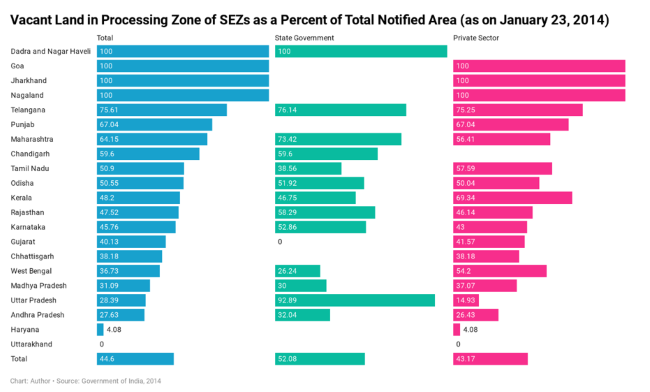
By Surya Tewari
In Budget 2021, finance minister Nirmala Sitharaman has made an earnest effort to reboot the Indian economy, which is struggling to recover from the impact of the Covid-19 pandemic. The budget has given a thrust to health, infrastructure, and manufacturing to bring the economy back on track. The fiscal deficit for the financial year has been brought down to 6.5% from this year’s 9%, though it would be naïve to expect fiscal consolidation at the time of a severe economic crisis. Instead of cutting down on spending, the government has charted a plan to monetise idle assets like land and to sell its stake in public sector units.
In fact, Budget 2021 covers two aspects of land – Swamitva scheme and monetisation of land. Swamitva scheme focuses on providing land right cards to property owners in rural India. Some 1.80 lakh cards have already been provided in 1,241 villages under this scheme and it will cover all villages in India. With respect to land monetisation, surplus land lying with the government will be sold in the market, given on concessional rates, or will be treated by similar means.
READ I Indian economy: Focus on fiscal consolidation will hurt fragile recovery
Budget 2021 highlights importance of land
The para 89 of the Budget 2021 speech reads:
“Idle assets will not contribute to Atmanirbhar Bharat. The non-core assets largely consist of surplus land with government ministries/departments and public sector enterprises. Monetizing of land can either be by way of direct sale or concession or by similar means. This requires special abilities and for this purpose, I propose to use a Special Purpose Vehicle in the form of a company that would carry out this activity.”
Swamitva will sort out the thorny issue of ownership of private land in rural areas. It would also help alleviate large number of litigations clogging the judicial system. Monetisation of surplus and idle land would be beneficial if the platform of SPV is used fairly. The anomalies in land acquisition and their adverse impact on the society and environment are well documented. Many a time, large tracts of agriculture and non-agriculture land acquired for infrastructure and industrial development have not been used for the intended purposes.
READ I Consultations, regulation key to the success of banking reforms unveiled in Budget 2021
Monetisation of land can ignite industrial growth
Land is a crucial factor of production and scarce in nature. With declining per capita availability of land, the need of the hour is its efficient use for economic purposes. Many scholars have also pointed out how manufacturing in India has missed the opportunity to scale up post reforms, primarily because capitalisation of land is a precondition for manufacturing growth.
The government had, in the past, transferred huge tracts of land for industrial activities in the country. So, when Sitharaman spoke about monetising government land, the question that arises is why not private land with industries too. Creation of a database by the Union government through the GIS-enabled Government Land Information System is indeed welcome, but the database can also include land with state governments and corporates.
Such a land bank should also be classified as per its quality i.e., productivity, accessibility etc, and unproductive and accessible land may be leased out for activities that will add to the economic prowess of the country. But this should come after the exhaustion of the first alternative of utilisation of the land already in operation. As private companies are the principal agents in organising economic activities post reforms, they should be encouraged to use idle/surplus land with them too.
READ I Technology and business growth: Seven guidelines for small and medium enterprises
Private land also can be monetised
The land is idle with private owners as well. The SEZs, for example, have seen large transfers of land from the government, but a significant portion of land has not been utilised. The government admitted in 2018 that 52% land is lying vacant in SEZs. SEZs may be performing satisfactorily in terms of exports, and investment, but the point is that they may perform a larger role in manufacturing. For this to happen, the entire land whether under closed/sick units or tracts of open land (part of production of goods and services) should be used efficiently.
As per land data of SEZs for 2014, vacant land with state governments and private promoters is enormous. Vacant land in processing is almost half the area under SEZs in the country. Moreover, in Dadra and Nagar Haveli, Goa, Jharkhand, and Nagaland, the entire notified area meant for processing is vacant. The share of vacant land is high also in the case of Telangana, Maharashtra, and Tamil Nadu. These are states with the highest number of SEZs in the country.

READ I Budget 2021: Several sops for MSMEs, start-ups; but nothing to solve fund crunch
The developer constraint especially of the private sector with respect to the location of SEZ in terms of access to transport routes, level of urbanisation, and productive land is also found untenable. Most of the SEZs are located in close proximity to million plus cities with most of them having productive land. With no particular land quality requirement for SEZs, and flexibility in the time period given for commencement of production to developers and units, the unutilised land is a matter of serious concern.
On top of this, there is tweaking in land area requirements in SEZs time and again. This not only indicates the lack of any scientific principle in deciding the size, but also speculative use imbibed in SEZs. The implication of land size reduction would be on denotification of the excess land. However, use of such de-notified land for industrial development is questionable. The utilisation of industrial plots for residential development is not uncommon in the country.
In view of competing uses of land, adverse impact of land acquisition, and difficulty in acquisition in Land Acquisition, Rehabilitation and Resettlement Act, 2013, it is important that accountability on the land use be fixed and all the running projects, whether of government or private, fully utilise the land with them.
READ I Truth serum: Govt must speed up Covid-19 vaccination drive
Government should list land pool available
The industrial information system of the commerce ministry is in the process of digitising all industrial areas in the country. The first focus should be on the land pool available in these projects. The vacant land information in these projects needs to be widely publicised in local print and electronic media so that all those entrepreneurs who are interested in starting an enterprise could be re-allotted such plots.
A mechanism should be evolved to compensate closed/sick units and to reallocate the same plots. If there is a need for developing new industrial areas, they should be built on unproductive land. Instead of giving doles of land, the government should handhold the new generation of entrepreneurs to create Atmanirbhar Bharat, or self-reliant India.
A developer of an industrial area should be entrusted with tasks like finding market for units, establishing linkages with clients, helping units to innovate and so on. The exemptions, incentives, benefits should also be linked to factors like output, quality, ratio of capital and labour use, quantum of exports, investment achieved and location of industrial areas in unproductive lands. After all, whether to build or to feed, land will continue to be the core of the economy. Therefore, to say that land would remain important and necessary part of life in India would not be an exaggeration.
(Surya Tewari is Assistant Professor, Institute for Studies in Industrial Development, New Delhi.)

